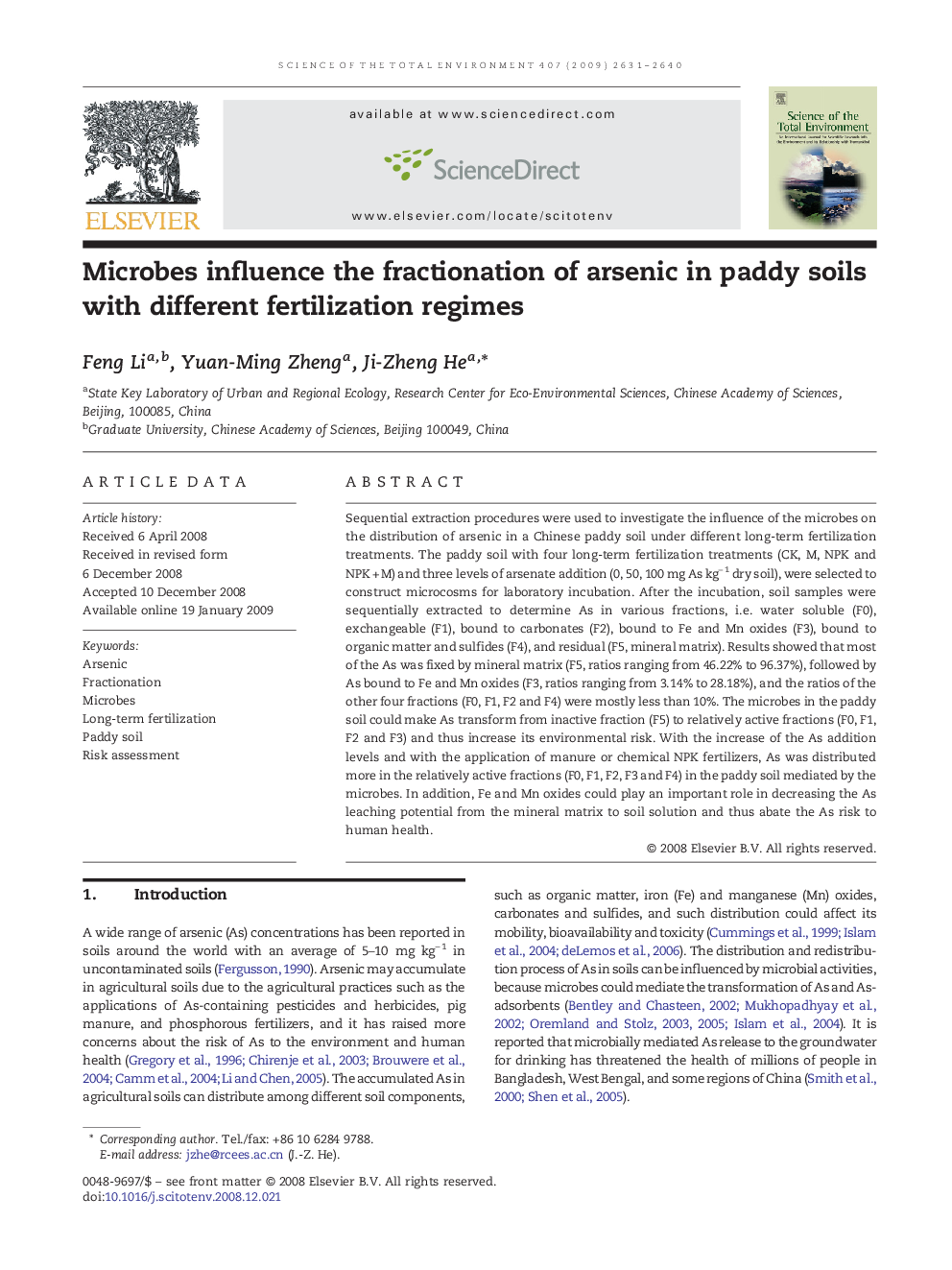| کد مقاله | کد نشریه | سال انتشار | مقاله انگلیسی | نسخه تمام متن |
|---|---|---|---|---|
| 4431951 | 1619902 | 2009 | 10 صفحه PDF | دانلود رایگان |

Sequential extraction procedures were used to investigate the influence of the microbes on the distribution of arsenic in a Chinese paddy soil under different long-term fertilization treatments. The paddy soil with four long-term fertilization treatments (CK, M, NPK and NPK + M) and three levels of arsenate addition (0, 50, 100 mg As kg− 1 dry soil), were selected to construct microcosms for laboratory incubation. After the incubation, soil samples were sequentially extracted to determine As in various fractions, i.e. water soluble (F0), exchangeable (F1), bound to carbonates (F2), bound to Fe and Mn oxides (F3), bound to organic matter and sulfides (F4), and residual (F5, mineral matrix). Results showed that most of the As was fixed by mineral matrix (F5, ratios ranging from 46.22% to 96.37%), followed by As bound to Fe and Mn oxides (F3, ratios ranging from 3.14% to 28.18%), and the ratios of the other four fractions (F0, F1, F2 and F4) were mostly less than 10%. The microbes in the paddy soil could make As transform from inactive fraction (F5) to relatively active fractions (F0, F1, F2 and F3) and thus increase its environmental risk. With the increase of the As addition levels and with the application of manure or chemical NPK fertilizers, As was distributed more in the relatively active fractions (F0, F1, F2, F3 and F4) in the paddy soil mediated by the microbes. In addition, Fe and Mn oxides could play an important role in decreasing the As leaching potential from the mineral matrix to soil solution and thus abate the As risk to human health.
Journal: Science of The Total Environment - Volume 407, Issue 8, 1 April 2009, Pages 2631–2640